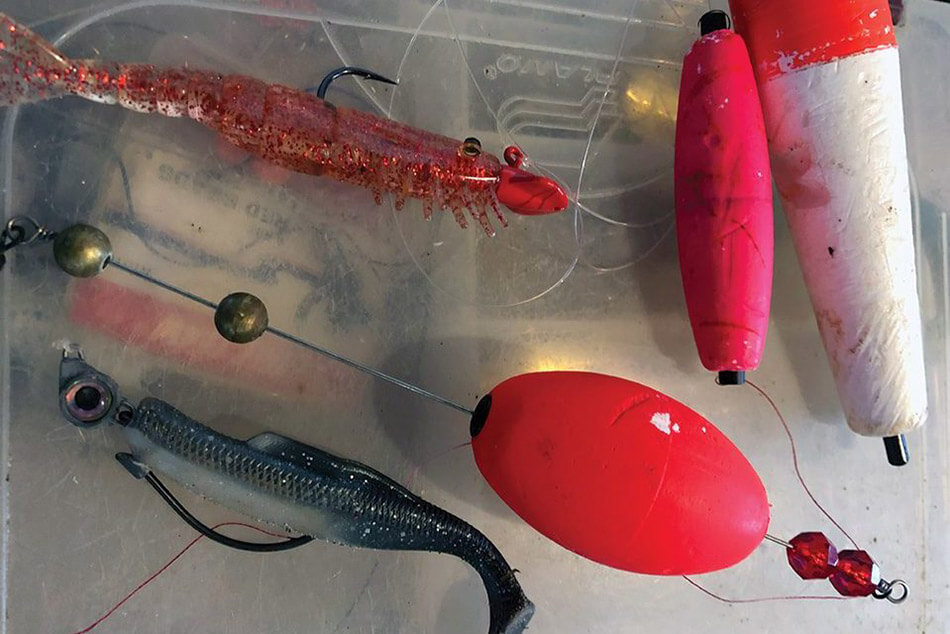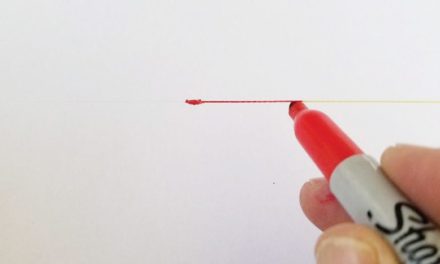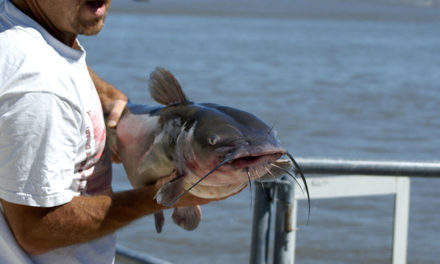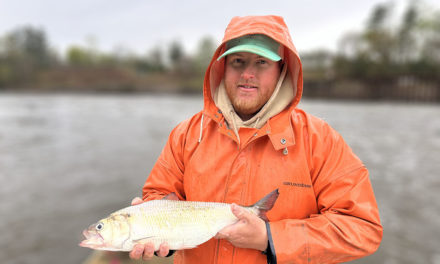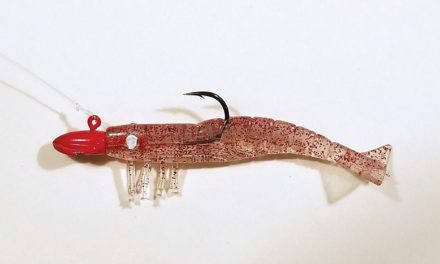I have started using fixed-position as well as sliding corks more and more over the past few years. Recognizing the effectiveness of different styles of cork is vital for different situations. Considerations include water depth and temperature, current—or lack of current—and target species.
Also, it has become evident that not all corks make the same noise. That can be a turn-on—or a turn-off—to fish at different times of the day, especially in different currents and depths.
For example, a few weekends ago, we had a great morning bite from striped bass using a 2-inch oval (chugging) cork. It was one of those bite-on-every-cast situations that everyone dreams about.
We noticed the bite slowing down a little as the sun got higher. A simple switch to a much quieter pencil-shaped cork brought the bite back to almost every cast again. We were fishing the same lure under the cork; the only change we made was the cork itself.
The more current and broken-up current you have, the more noise you want your cork to make as an attractant. Of course, this holds for almost every species, but let’s explore the topic a little deeper. The reasoning behind creating a specific type of noise with your cork is to imitate the sound of fish busting bait on the surface.
Striped bass and snook make a popping sound when they eat bait on the surface. Likewise, speckled trout “slurp” the bait off the surface. A red drum’s mouth is on the underside of its head and has to get on top of the bait to eat it.
There’s much to unpack here concerning sizes, shapes, and weight suspended below the cork. But, unfortunately, it’s too much to cover in this article.
The point is, don’t just stick with the same cork you’ve always fished. Just like you change lures or baits when the bite slows, try experimenting with different cork sizes and styles. Please pay attention to how your lure or bait presents itself and how the fish react.
I’ve evolved to fishing a ¾-ounce jig and 7-inch Super Fluke under a cork for larger fish, so a 3-inch cigar float is not an option for this size bait. However, the 3-inch cigar float is perfect for the 3/8-ounce jig/shrimp combo, and it makes the perfect sound for speckled trout and drum in the backwater.
I’ll close with this; watch this video that describes the different sizes and shapes of floats I use and what type of sounds they make. Here’s a teaser: Have you ever thought of using a popping cork offshore? For more details, check all this out on the website.
Simply put, HEAVY DUTY popping cork for the Barefoot Jig casts like a bullet, never fouls, and makes the correct sound(s). Even better, the (balanced) Barefoot Jig head will keep the (DOA) shrimp, (Zoom) Superfluke, or any other soft plastic sitting perfectly horizontal under the cork or without a cork. This jig head gives the superfluke the same action as a gotcha plug but with a black nickel 4/0 single hook.
SALTWATER TACKLE YOU MAY WANT TO TRY:
7/0 and 11/0 J-Hook Chin Weights: Target fish include Tuna, Wahoo, Mahi or Common Dolphin, King Mackerel, Wahoo, and more. Easy to rig!
4 oz. Crab Decoy Jig: Target fish for Striped Bass, nearshore Drum, Snook, Grouper, west coast bottom fish, and more.
4 oz. Tuna Squid Decoy Jig: From the eastern, western, Alaskan, and gulf coasts, target fish include: Tuna, Dolphin, Wahoo, Fluke, Flounder, Striped Bass, Seabass, Amberjack (east coast), Yellow Tail (west coast), California White Sea Bass (west coast), Grouper, Snapper, Halibut, Ling cod, and all Alaskan bottom fish.
8 oz. - 12 oz. 10/0 Squid Decoy Jig: Catch BIG Grouper, Amberjack, Giant Stripers, and more.

